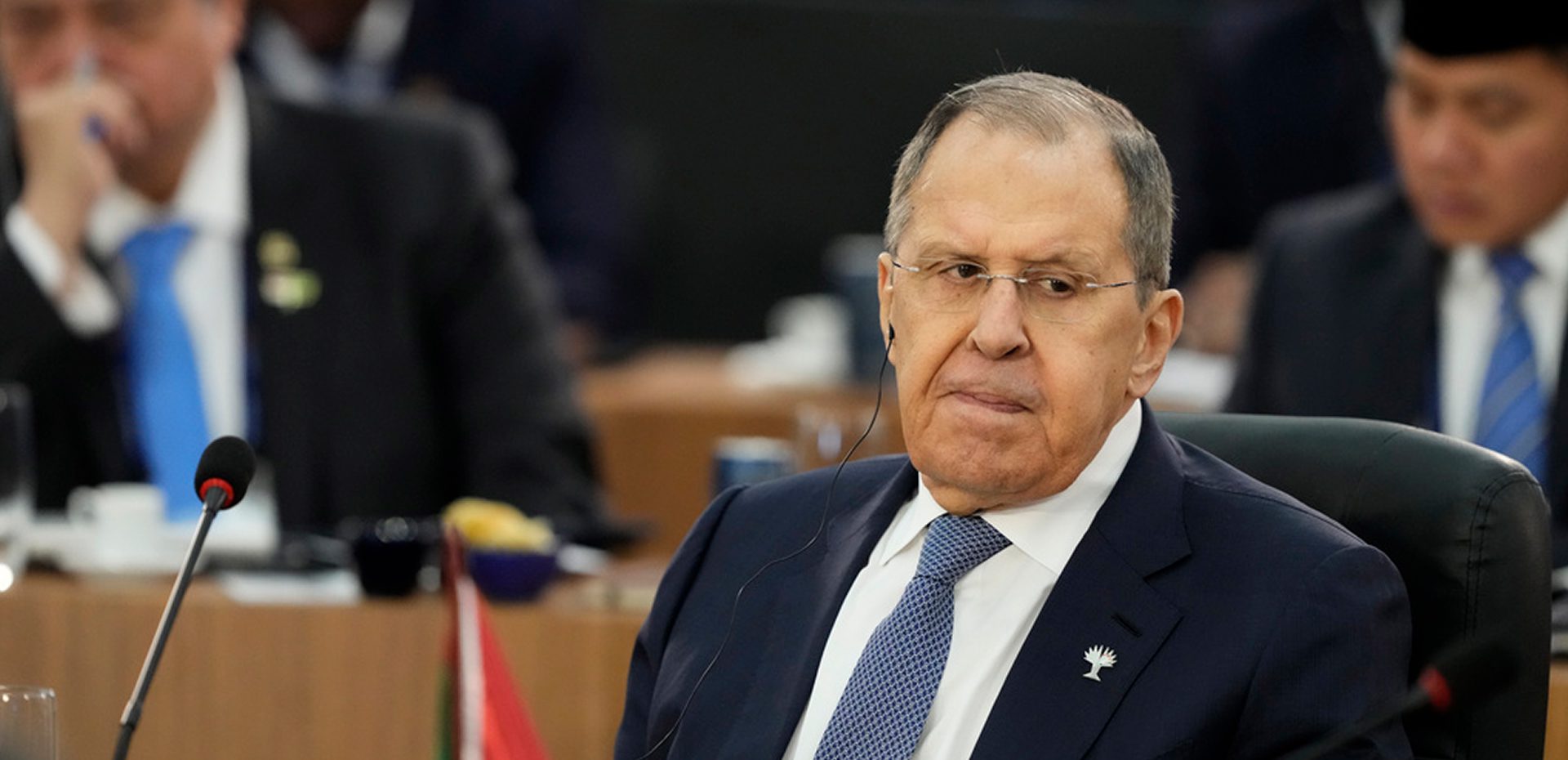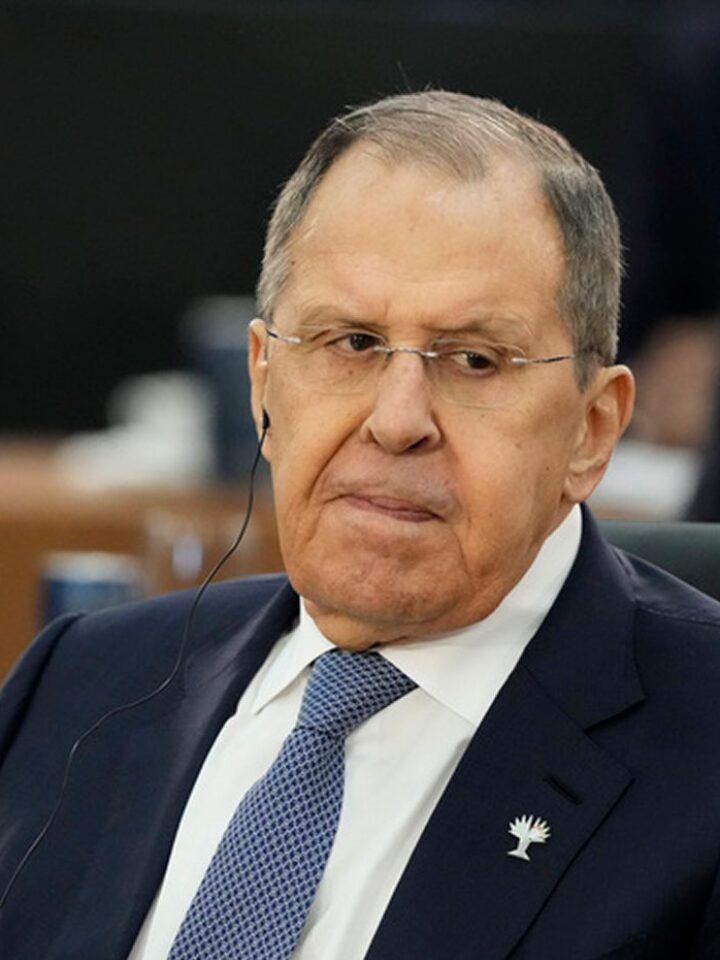Russia’s foreign policy is undergoing a systemic crisis. Speculation surrounding the recent disappearance of Foreign Minister Sergey Lavrov from public view has highlighted the vulnerabilities of an ageing regime and the shortcomings of its foreign policy strategy. Having opted for open confrontation with the West, Russia is rapidly losing ground in its neighbourhood, even though the Kremlin expected that victory in this confrontation would restore its status far beyond Europe. A possible rapprochement between the United States and China, driven in part by Moscow’s excessively aggressive behaviour and intransigence, is a source of concern for the Kremlin.
Erosion of the governance system
Lavrov’s brief absence from public duties triggered speculation about his possible fall from grace after the failed talks with the United States and the cancellation of the planned summit between Vladimir Putin and Donald Trump in Budapest. Lavrov missed a meeting of Russia’s Security Council on 5 November, where preparations for full-scale nuclear testing were discussed, and, contrary to expectations, did not lead the Russian delegations to the ASEAN summit. It was also announced that Maxim Oreshkin, deputy chief of staff in the presidential administration, would lead the Russian delegation to this week’s G20 Summit in South Africa.
Although the precise reasons for Lavrov’s disappearance are unknown, the episode reflects a deeper crisis within the governance system. The Ministry of Foreign Affairs has lost the ability not only to influence decisions about the country’s political direction, but also to oversee their implementation. The execution of foreign policy, which Putin shapes single-handedly, has shifted to an informal circle of trusted figures within the presidential administration, the special representative Kirill Dmitriev, and other intermediaries, while the formal diplomatic bureaucracy performs largely ceremonial functions. This arrangement ensures a high degree of short-term control, but eliminates feedback mechanisms and the system’s capacity for self-correction.
Ageing and declining capacity within the senior ranks further deepen the crisis inside Putin’s governance system. Lavrov turned 75 this year, and the president’s foreign policy aide, Yuri Ushakov, is 78.
The need for renewal is clear, but the Kremlin faces significant internal constraints. In the foreign policy apparatus, as in the country’s senior military leadership, there has been no turnover at the top for many years. No successors have been cultivated within the institutions, and bringing in external managers is difficult in sectors that require specialised expertise and deep institutional embeddedness.
The shortage of obvious candidates further limits the scope for reshuffles. Amid the turbulence caused by the war, any personnel change is viewed as a potential threat to the stability of the governance system. The leadership crisis at the Ministry of Foreign Affairs is only one example of a broader problem: in personalist regimes, the departure or weakening of the leader inevitably disrupts the functioning of the entire structure.
Diminishing Influence
Weak institutions and entrenched stagnation in the senior ranks have deprived Moscow of the ability to respond effectively to the many challenges generated by the war against Ukraine. The gradual erosion of Russia’s influence, which began in the mid-2000s, has accelerated sharply since 2022 and is now visible across multiple regions. The loss of trust caused by the war makes Moscow an increasingly unattractive partner. It is often now just one of many external actors – no longer the strongest, and progressively less able to shape regional agendas.
Central Asia
Since 2022, Kazakhstan has been a formal partner of Moscow, but is steadily diversifying its relations. The country is investing heavily in the Trans-Caspian International Transport Route (TITR) and expanding its Caspian and southern oil export corridors, thereby reducing dependence on Russia.
At the same time, Astana is strengthening ties with China: in the first eight months of 2025, bilateral trade exceeded $30 billion, surpassing Kazakhstan’s trade with Russia, and the total portfolio of Chinese investments in the country now exceeds $25 billion.
Uzbekistan and Turkmenistan are likewise accelerating the diversification of their external ties. Tashkent is expanding trade with China – which grew by more than 20 per cent in the first eight months of 2025 – and is strengthening cooperation with Turkey and the Gulf states, while reducing its dependence on Russia: Russia’s share of Uzbekistan’s trade has fallen to 16 per cent. Turkmenistan is prioritising gas exports to China and developing routes that bypass Russian infrastructure.
Central Asia is gradually entering a wider diplomatic orbit: in November 2025, the leaders of the region’s five states met in Washington for the first time. However, the significance of this format should not be overstated – Central Asian countries will continue to balance between China, Russia, and the West.
South Caucasus
The South Caucasus is becoming an arena of competition among the European Union, Iran, China, the United States, and Turkey. Despite attempts to preserve the appearance of control, the Kremlin finds itself increasingly excluded from key regional processes.
In Armenia, trust in Moscow has been undermined by its non-intervention in the Karabakh conflict and the withdrawal of Russian peacekeepers in 2024. Yerevan has begun to re-orientate itself towards the West, signing a Strategic Partnership Charter with the United States in January 2025 and initiating the process of closer alignment with the European Union.
Azerbaijan, after its victory in Karabakh, has definitively moved out of Moscow’s zone of influence. Its alliance with Turkey, the initiation of a peace agreement with Armenia and the expansion of gas supplies to Europe have made Baku an independent actor that no longer requires Russian mediation.
In Georgia, Russia is expanding its economic presence, but continues to be seen as an unwelcome actor by society: 69 per cent of Georgian citizens regard Russia as their country’s main enemy, compared with 49 per cent in 2019. Rising anti-Russian sentiment since the start of the war in Ukraine has made any overt rapprochement with Moscow politically toxic. As a result, Georgian Dream avoids an explicit pro-Russian stance, even though it has, in practice, slowed progress towards closer integration with the European Union, increased trade with Russia, and copied certain methods of pressure on civil society from Putin’s regime. At the same time, Moscow continues to exert influence through the unresolved conflicts in Abkhazia and South Ossetia.
Eastern and South-Eastern Europe
In Moldova, Russia has recently suffered a clear political setback. Despite the considerable resources invested by the Kremlin, pro-Russian parties lost the September 2025 parliamentary elections to supporters of a pro-European course.
Putin’s aggressive policy is forcing even long-standing partners to reconsider their positions. The unexpected visit of Serbia’s President, Aleksandar Vucic, to Ukraine in June 2025, his statements about the need to prepare for a possible war with Russia, and suggestions that Serbia may have supplied weapons to Ukraine all illustrate Vucic’s declared intention for Belgrade to ‘step back a little’.
Beyond the post-Soviet space
Russia’s influence in Africa has weakened noticeably since the death of Yevgeny Prigozhin. Structures linked to the Wagner Group had long served as instruments of Moscow’s political and military presence in the Sahel, the Central African Republic, Sudan, and Mali, but their coordination and financing were disrupted after 2023. Some units of the former Wagner Group have since been integrated into the new ‘Africa Corps’ under the control of the Ministry of Defence, yet the effectiveness and autonomy of these operations have diminished.
Russia’s presence in Latin America remains largely symbolic. Moscow uses the region to display its diplomatic activity and to promote the idea of ‘multipolarity’, which contributes to a generally favourable attitude towards Russia but does not translate into meaningful influence.
After Washington threatened to take limited military action against Nicolás Maduro’s regime in Venezuela in autumn 2025, Moscow sent an Il-76 military transport aircraft to the country, reportedly carrying military equipment and advisers, and confirmed deliveries of the ‘Pantsir-S1’ and ‘Buk-M2E’ air defence systems. These steps are intended primarily to demonstrate anti-Western solidarity; their actual military impact is limited.
The Great Game
These cumulative losses stem not only from a governance crisis, but also from a deliberate choice by Moscow. The foreign policy strategy of the Russian leadership is built around the notion of long-term confrontation with the West, while regional positions are treated as secondary and, when necessary, expendable assets.
With limited economic and political capacity to advance its interests systematically in the West, Putin’s regime is increasingly relying on the tools of hybrid warfare. Their main purpose is to undermine cohesion and exacerbate internal divisions within Western societies. This activity will continue unless Western countries develop a more coordinated and proportionate response.
The war against Ukraine is a direct manifestation of this logic. For Putin, it is less a struggle for a ‘sphere of influence’ than an attempt to demonstrate to Washington that Russia remains a power capable of imposing its will and shaping the international order. In his view, victory in Ukraine should compensate for the status which Russia has lost over the past three decades and restore its place among the great powers.
However, this calculation is proving increasingly untenable. Russia cannot achieve a decisive advantage on the battlefield in Ukraine without further mobilisation and higher military spending, while Western sanctions have significantly deepened its dependence on China. Despite a partial overlap of interests, the question of what role Russia can occupy within an international architecture shaped by Beijing remains unresolved. In the more favourable scenario, it could become China’s junior partner; in the less advantageous one, effectively China’s vassal.Against this backdrop, a gradual rapprochement between the United States and China is a source of anxiety for the Kremlin. Even a hint of potential alignment between Washington and Beijing is perceived in Moscow as an existential threat: an allocation of spheres of influence without Russia’s participation would deny the Kremlin any prospect of being recognised as an equal partner and would cement Russia’s position on the periphery of global politics.




